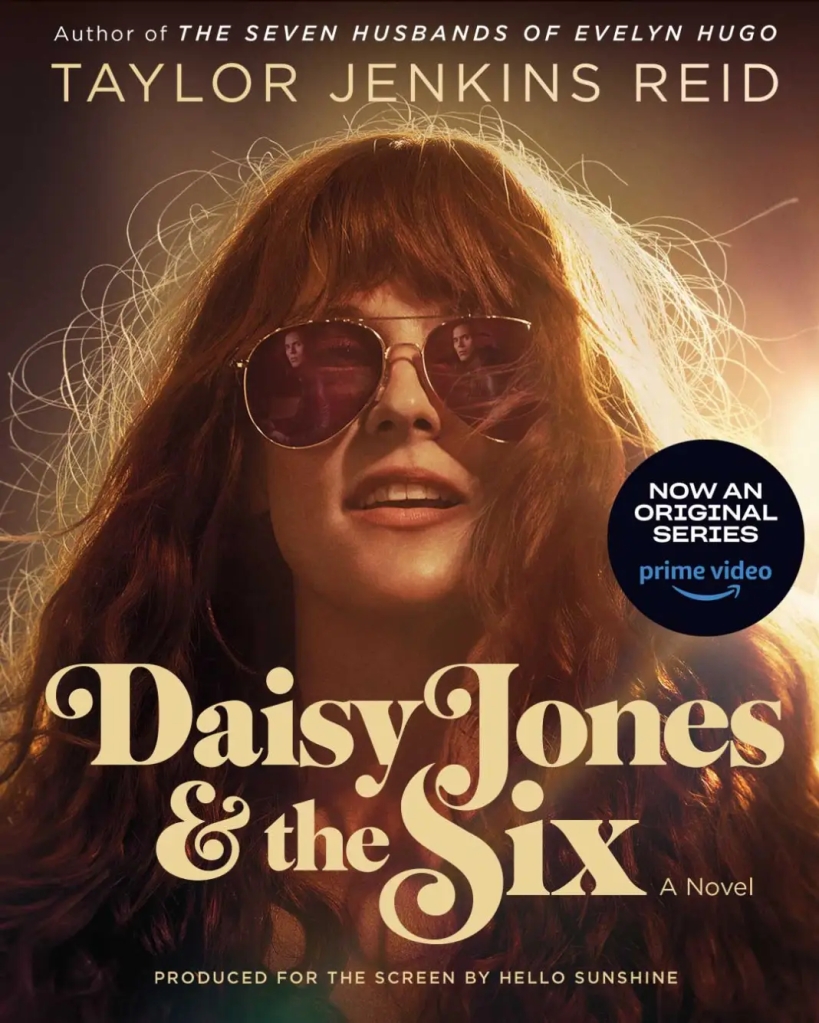
Daisy Jones and The Six: Limited series coming to Amazon Prime on March 3, 2023.
Taylor Jenkins Reid’s best-selling novel is a series of interviews telling the story of a fictional band called Daisy Jones and The Six, their rise to fame, and the highs and lows and rock and roll. This book has all the drama you would expect from a rock band in the seventies, including an off-beat female lead, band romances, backstabbing, and a possible love triangle. The series is set to start releasing episodes in March, with its first episode airing March 3rd. If you find yourself feeling as though the storyline feels eerily similar, Reid has admitted she got the inspiration for her story from one of the most infamous bands of all time, Fleetwood Mac. Along with an entertaining story, the show will also feature original music as seen in the book, which fans are more than a little excited for. The show is set to star Riley Keough as Daisy Jones and Sam Clafflin as Billy Dune, the main male protagonist.
It Ends with Us: Movie to be released in late 2024.
It Ends with Us by Colleen Hoover is the book that broke the internet, becoming a Tik-Tok sensation. This book was originally published in 2014, and its original popularity was underwhelming. Back when the COVID-19 pandemic first started in 2020, the book was talked about nonstop online until everyone had heard of it. To say this completely changed Colleen Hoover’s career would be an understatement. This book and its revival in popularity nearly single-handedly created #BookTok, a section of Tik-Tok dedicated to talking about books and book recommendations. While there is no official release date for the movie, the two lead actors have been announced, which again sent Tik-Tok into a frenzy. The story follows Lily Bloom, who moves to Boston to follow her dream of opening her own flower shop when she meets Ryle, a dreamy surgeon. When their relationship progresses, her dream man turns into more of a nightmare. Before you read this book or watch the movie, read about trigger warnings, especially if you are specifically affected by domestic abuse.
What has fans going so crazy over this cast? It was not at all who they expected. Fancasts have been going around since the news dropped of the upcoming movie. The most popular fancast for the leads of Lily and Ryle were Abigail Cowen and Theo James. However, the official leads of the movie are Blake Lively and Justin Baldoni, who also originally bought the rights to make the film.
Lessons In Chemistry: Apple TV drama show set to release in 2023.
Lessons In Chemistry byBonnie Garmus tells the story of Elizabeth Zott, a brilliant chemist who is forced out of the lab and into the kitchen in the sixties. Struggling to make it in the misogynistic world of science at the time, she is discovered for her knowledge of food science and nutrition and is offered a television show. With a daughter to support, she has little choice but to accept the offer. While it isn’t her dream and is far beneath her intellectual abilities and her degree, it pays the bills and is a less rigid path than that of a female scientist. This book was the Barnes & Noble Book of the Year for 2022, a New York Times bestseller, and the Goodreads Choice Award winner for 2022. It was published on March 29, 2022 by Doubleday books. The series stars Brie Larson as Elizabeth Zott, who is most well known for her role as the titular character in Captain Marvel.
By Ally Orsini, CambridgeEditors Team






